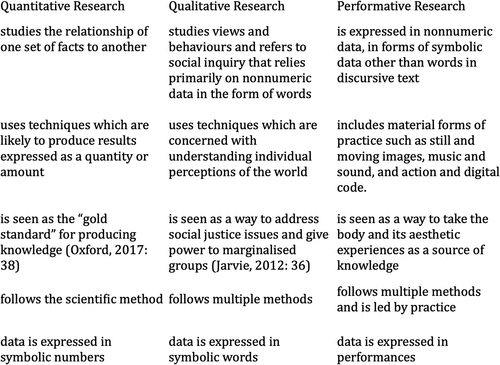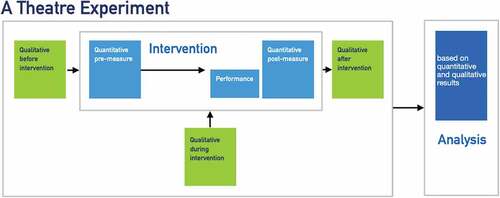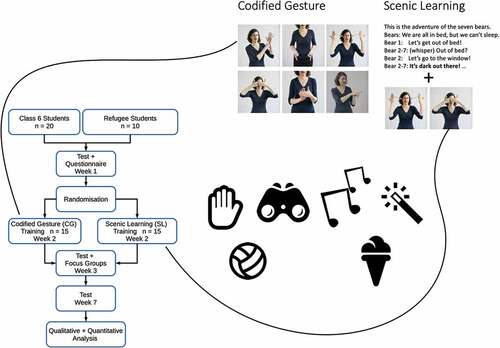Figures & data
Figure 1. Key differences between quantitative, qualitative and performative research paradigms adapted from Haseman (Citation2006) and others.

Figure 2. A schematic representation of the basic procedures needed to implement a theatre experiment adapted from the embedded experimental model found in Creswell and Plano Clark (Citation2007, p. 68).

Figure 3. The codified gesture and scenic learning conditions over time.

Data availability statement
Data sharing is not applicable to this article as no new data were created or analyzed in this study
